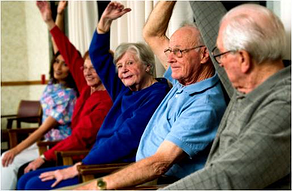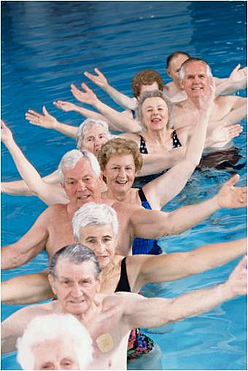 In part I of this blog series, we discussed opportunities to develop a comprehensive Olympics-themed program that would create a more memorable experience for participants as well as opportunities to attract more resident interest in the events. In the second part of this blog, we will explore a variety of events that you can consider folding into your Olympics to compliment the recreational activities your residents already know and love or to take a different path all-together.
In part I of this blog series, we discussed opportunities to develop a comprehensive Olympics-themed program that would create a more memorable experience for participants as well as opportunities to attract more resident interest in the events. In the second part of this blog, we will explore a variety of events that you can consider folding into your Olympics to compliment the recreational activities your residents already know and love or to take a different path all-together.
Part II: Freshen up your Olympic events
Weekly recreational offerings with a strong resident following might seem like low-hanging fruit when it comes to spinning off an event for an Olympics-themed program. However, creating a flyer with your own Olympics logo and inviting these participants to a “special” tournament one afternoon can be less than inspiring for residents. Read on to broaden your horizons on additional events you can pull into your next Olympics adventure.
Recreational Activities & Games:
You’ve probably considered croquet, putting contests, corn hole, shuffleboard, bocce ball, ping pong, water volleyball, billiards, etc., but have you considered adapting your own versions of the following?
- Frisbee Discuss: Play it indoors or outdoors and mark targets at varying distances. You can use hoola hoops or simply use tape to mark off the targets. You can designate varying point values for the different distances or recognize participants by the number of Frisbees that hit inside or on the target.
- Water Balloon Shotput: Teach your residents how Olympians throw a shot put (without or without the spinning in a circle…OK, probably without the spinning) but use a water balloon! Measure the splash marks and who can shotput the water balloon the furthest distance.
- Wii: Many residents are already familiar with Wii bowling and golf, but consider purchasing the Wii Fit if you don’t have one and allow your residents to hone their skills on downhill skiing. Wii also has games for archery, hunting & target practice, and many other options that might appeal to your residents.
- Synchronized Swimming: Planned well in advance of your Olympics, you can have small groups of 3-4 residents compete against one another in synchronized routines they develop or have one large group of residents work together to put on a spectator sport for the entire senior living community. Perhaps you could host your Opening Ceremonies in your pool area to increase exposure of this wonderful amenity your community has to offer!
Brain Fitness:
You’re Olympic events don’t necessarily have to be recreation or fitness related. Finding other ways for residents to compete can be a great way to attract more individuals to participate.
- Scavenger Hunt: Take pictures of random artwork and landmarks inside and outside at your community and provide these snapshots to participants. They will embark on a scavenger hunt trying to recall where they’ve seen these different items throughout the community and will visit each location. You can make it a timed event for the top three finishers or do recognition awards for everyone who makes it through.
- Brain Trivia: Host a Jeopardy or other trivia type event for residents to promote intellectual wellness as part of your Olympics. For a large turnout, you can have multiple games going on at different tables simultaneously, or you can have residents work as teams for the answers.
Let your creative juices flow in developing a comprehensive and fresh approach to your next community Olympics! If you like what we have shared, check out our Best Practice Series featuring 11 of our Best Practices we have implemented in active aging communities!

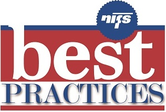
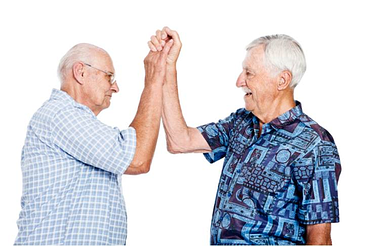 Many communities have regularly scheduled recreational activities on the monthly calendar such as croquet, bocce ball, or Wii that seem like fairly logical programs to spin into Olympics-themed events in senior living communities. Still, it’s not enough to simply group these regularly occurring events together and call them your Community Olympics. How do you set up the initiative so that it has broad appeal and allows those residents who participate in the events regularly to feel inspired and challenged alongside their novice neighbors? This two-part blog will provide creative tips to kick your Olympics up a notch with your resident favorites as well as provide fresh new ideas for events.
Many communities have regularly scheduled recreational activities on the monthly calendar such as croquet, bocce ball, or Wii that seem like fairly logical programs to spin into Olympics-themed events in senior living communities. Still, it’s not enough to simply group these regularly occurring events together and call them your Community Olympics. How do you set up the initiative so that it has broad appeal and allows those residents who participate in the events regularly to feel inspired and challenged alongside their novice neighbors? This two-part blog will provide creative tips to kick your Olympics up a notch with your resident favorites as well as provide fresh new ideas for events.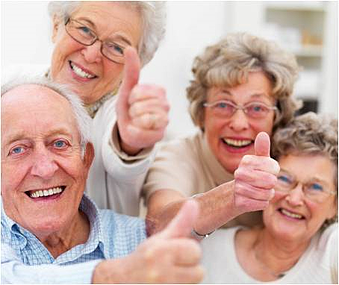 Raise your hand if you love hearing stories about how your staff make a resident’s day, particularly when it occurs organically, if you will, by the employee simply being who she is. I know…me too. That’s why I couldn’t resist sharing these two stories in our blog and how we engage residents in senior living fitness programs.
Raise your hand if you love hearing stories about how your staff make a resident’s day, particularly when it occurs organically, if you will, by the employee simply being who she is. I know…me too. That’s why I couldn’t resist sharing these two stories in our blog and how we engage residents in senior living fitness programs. 